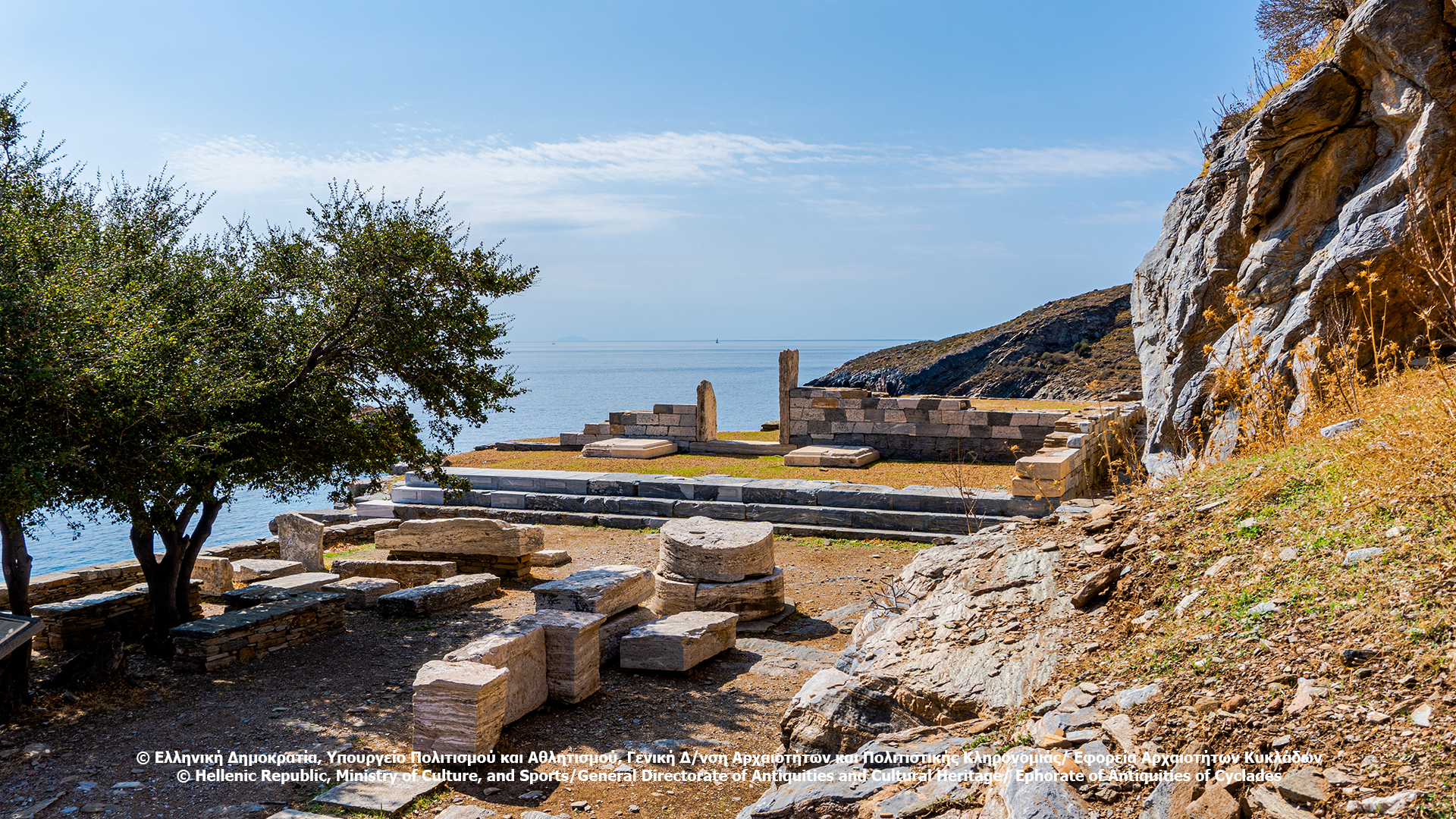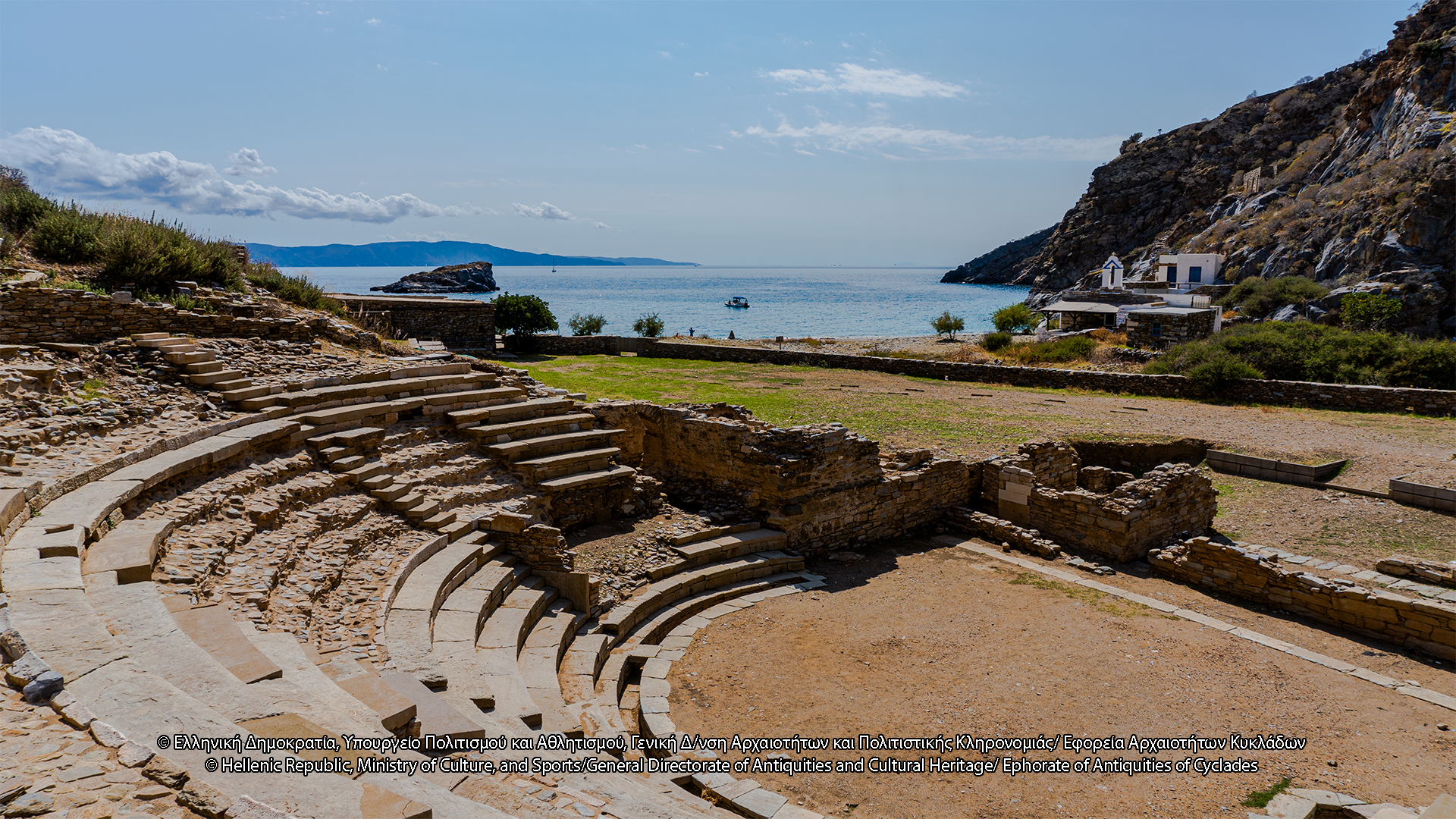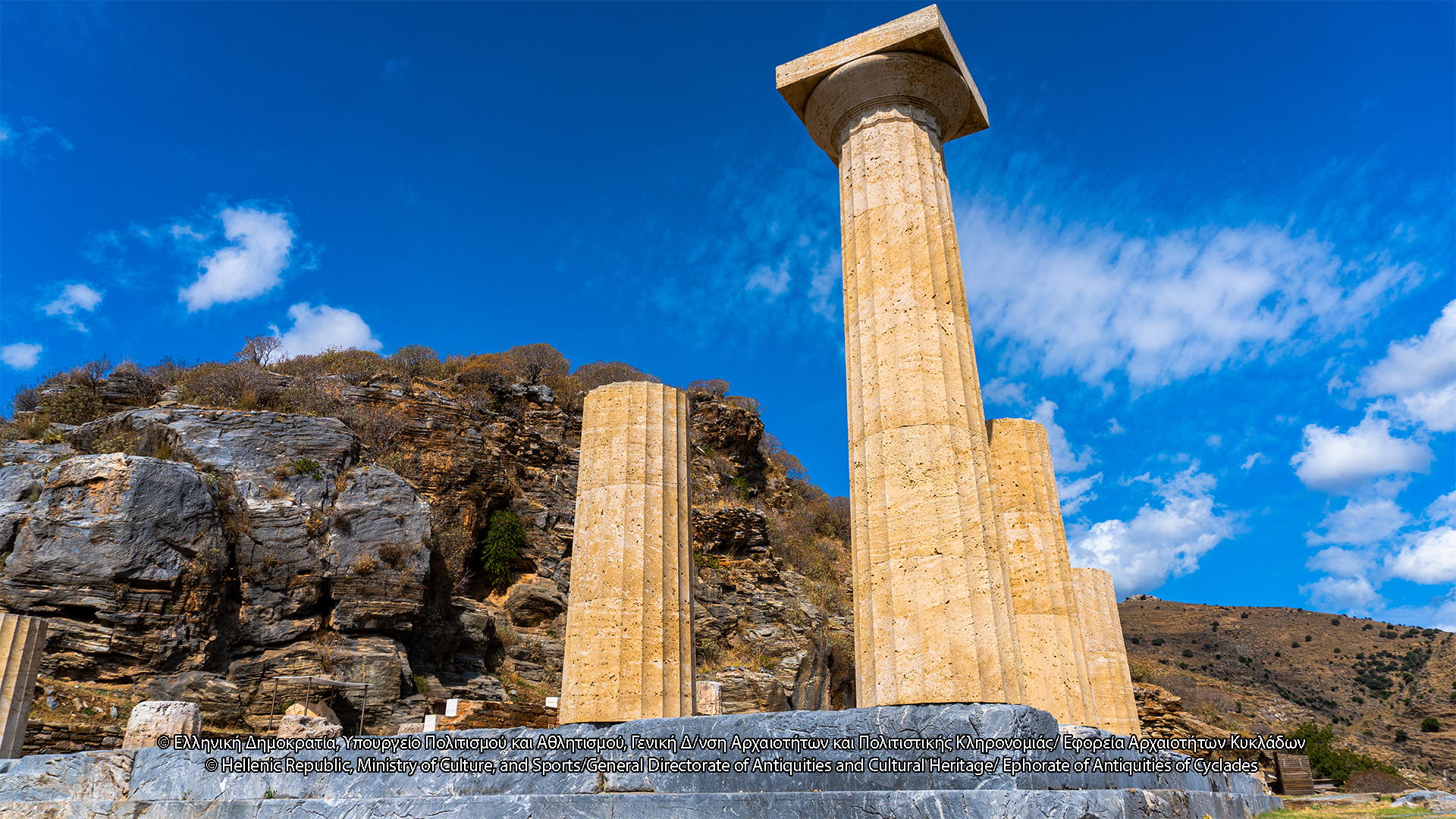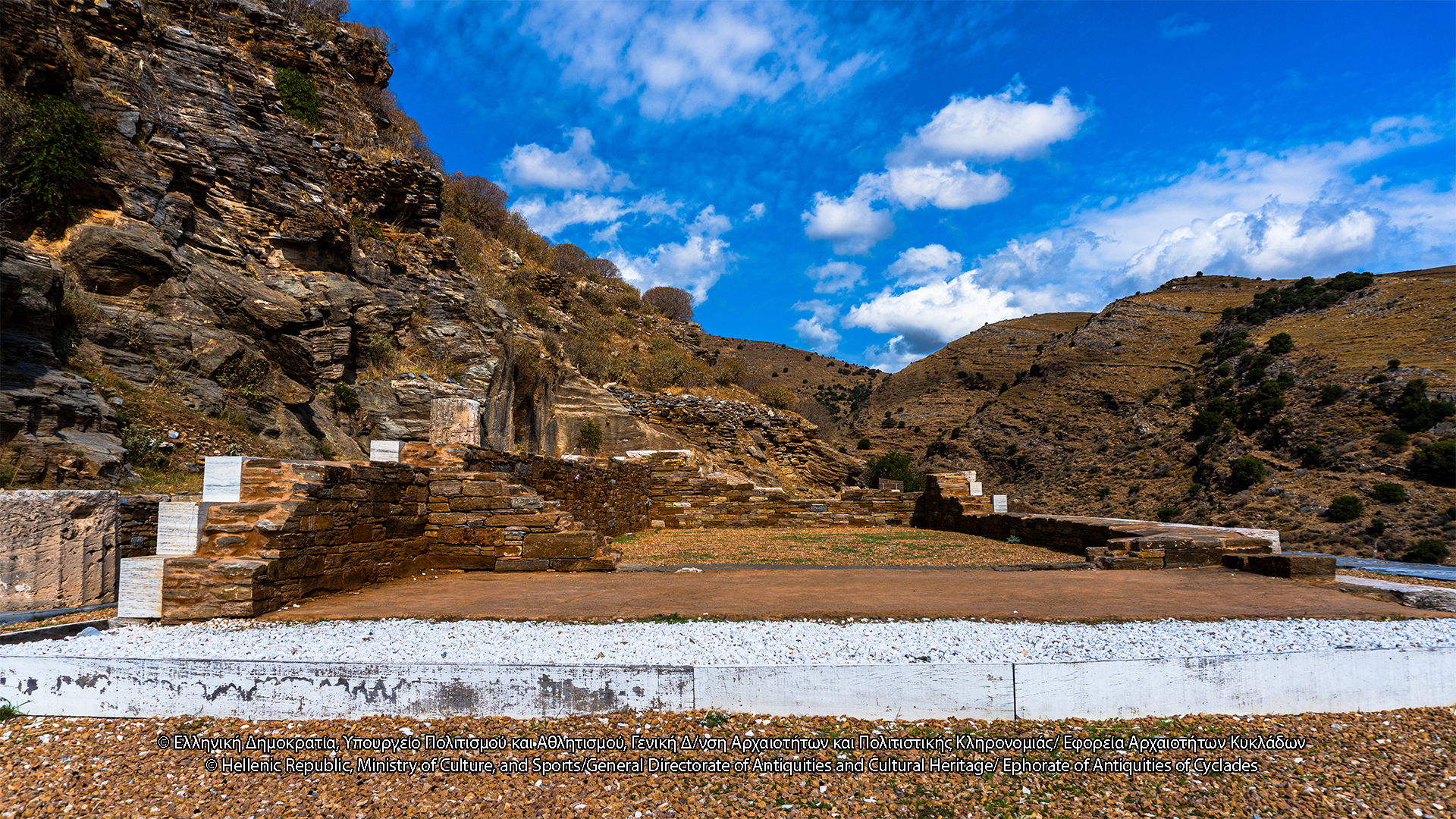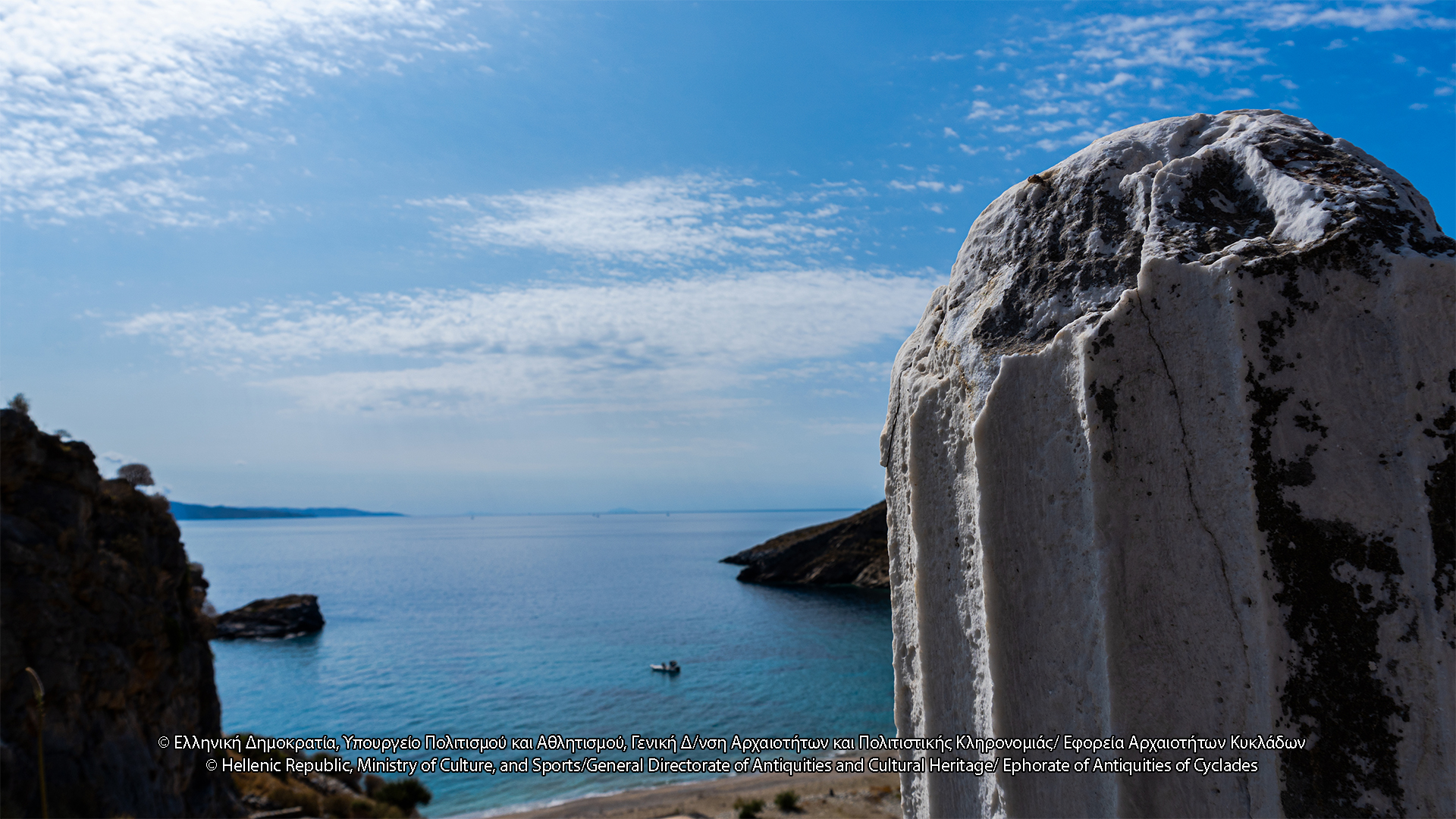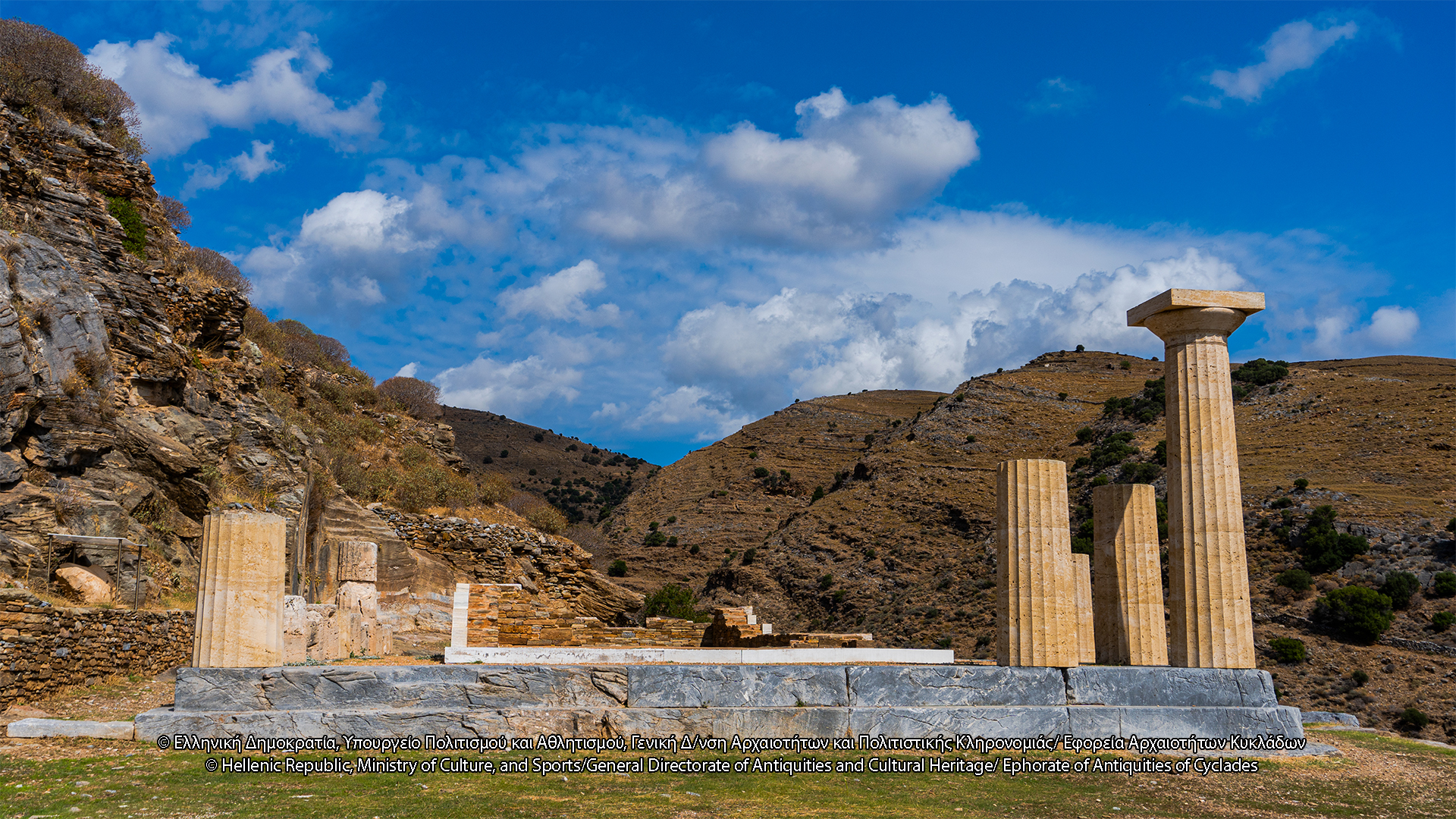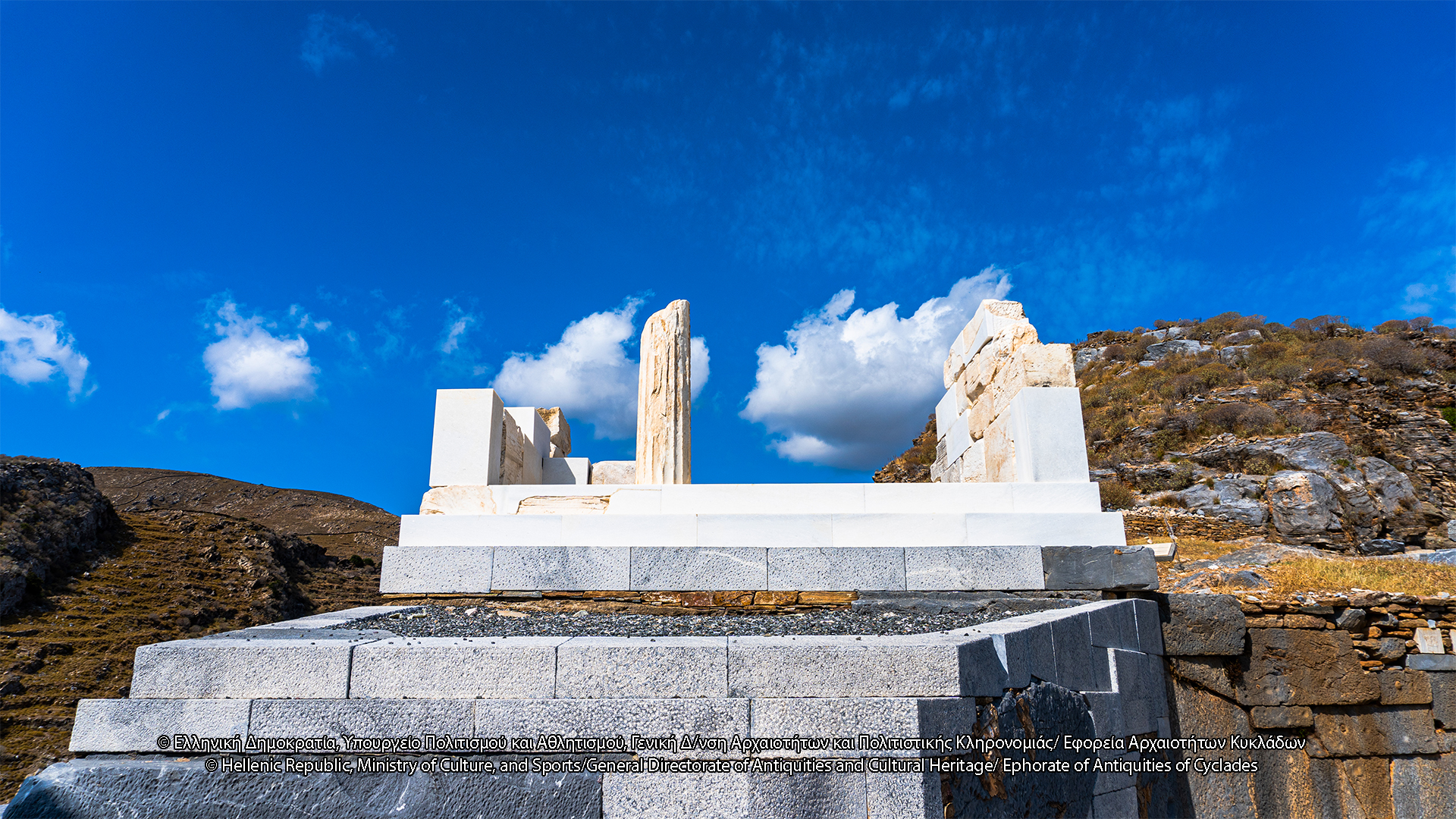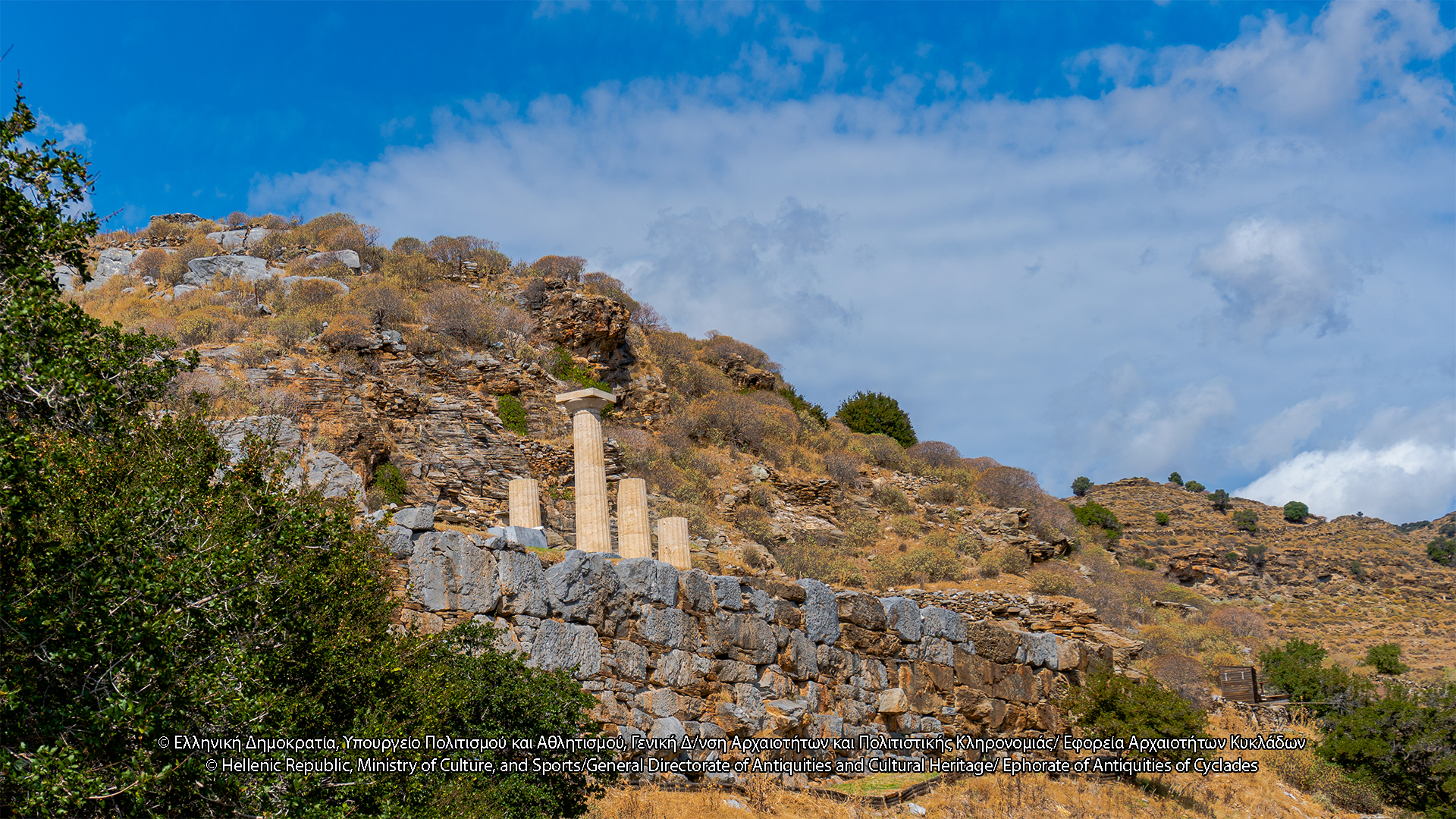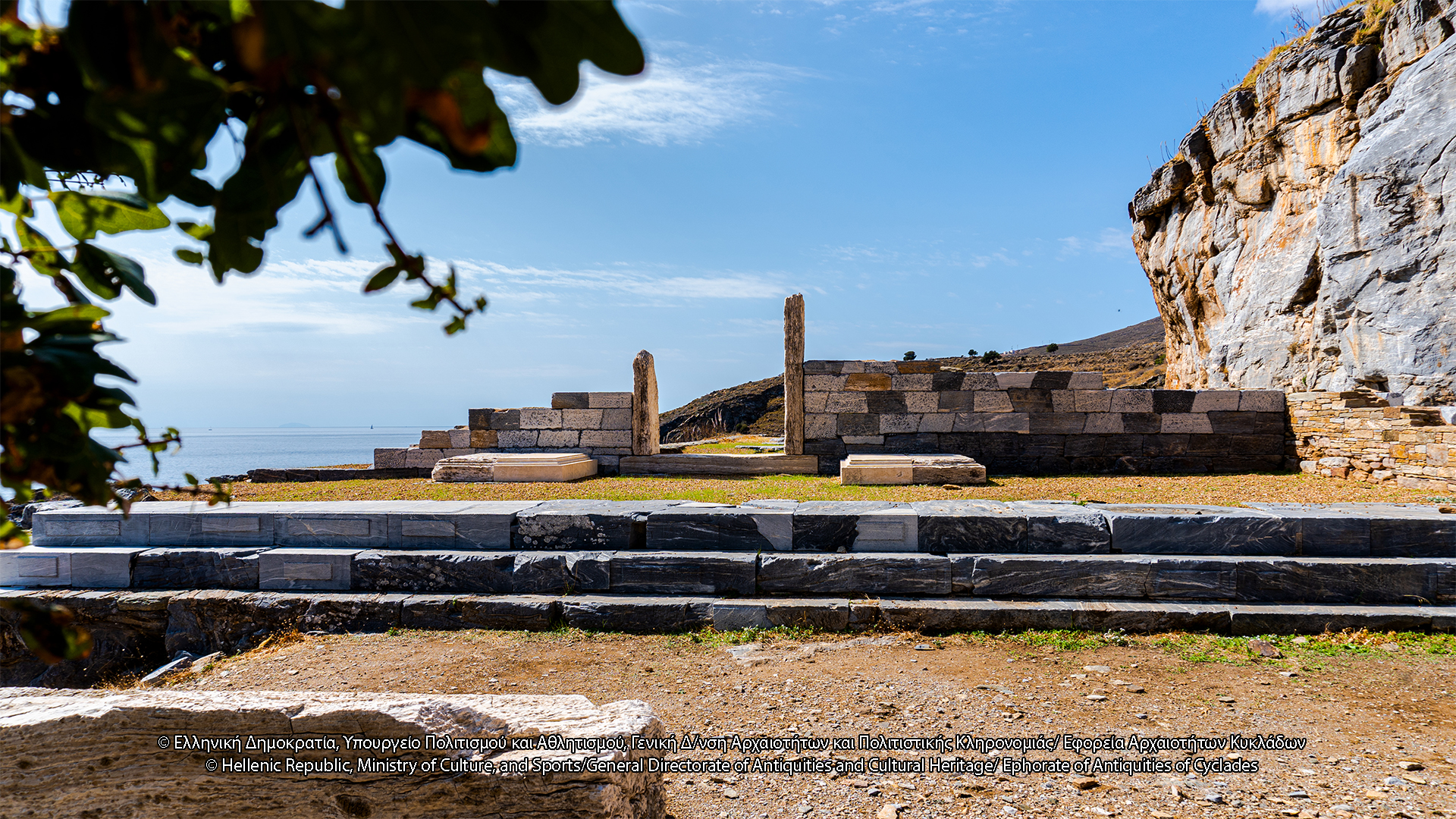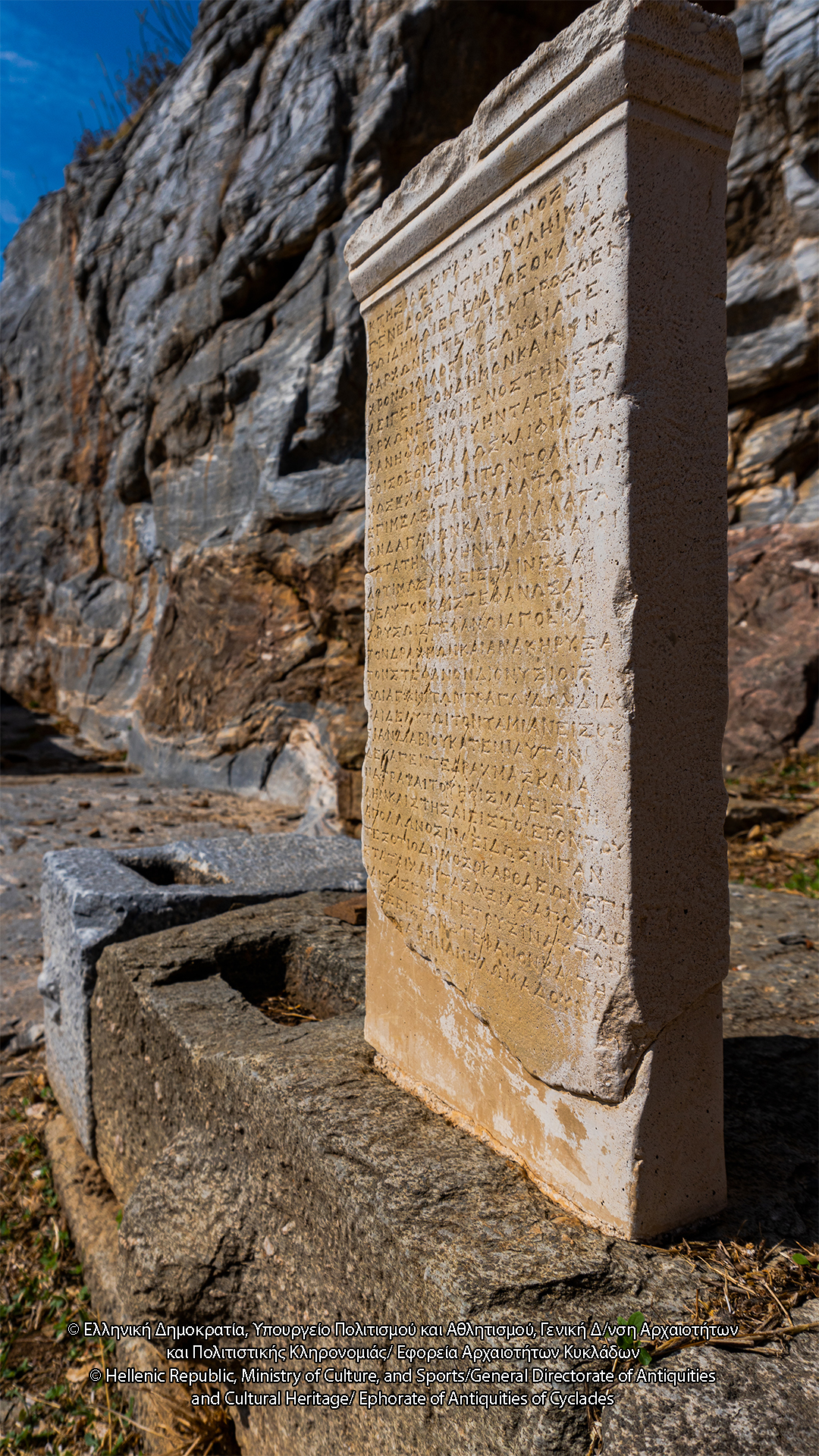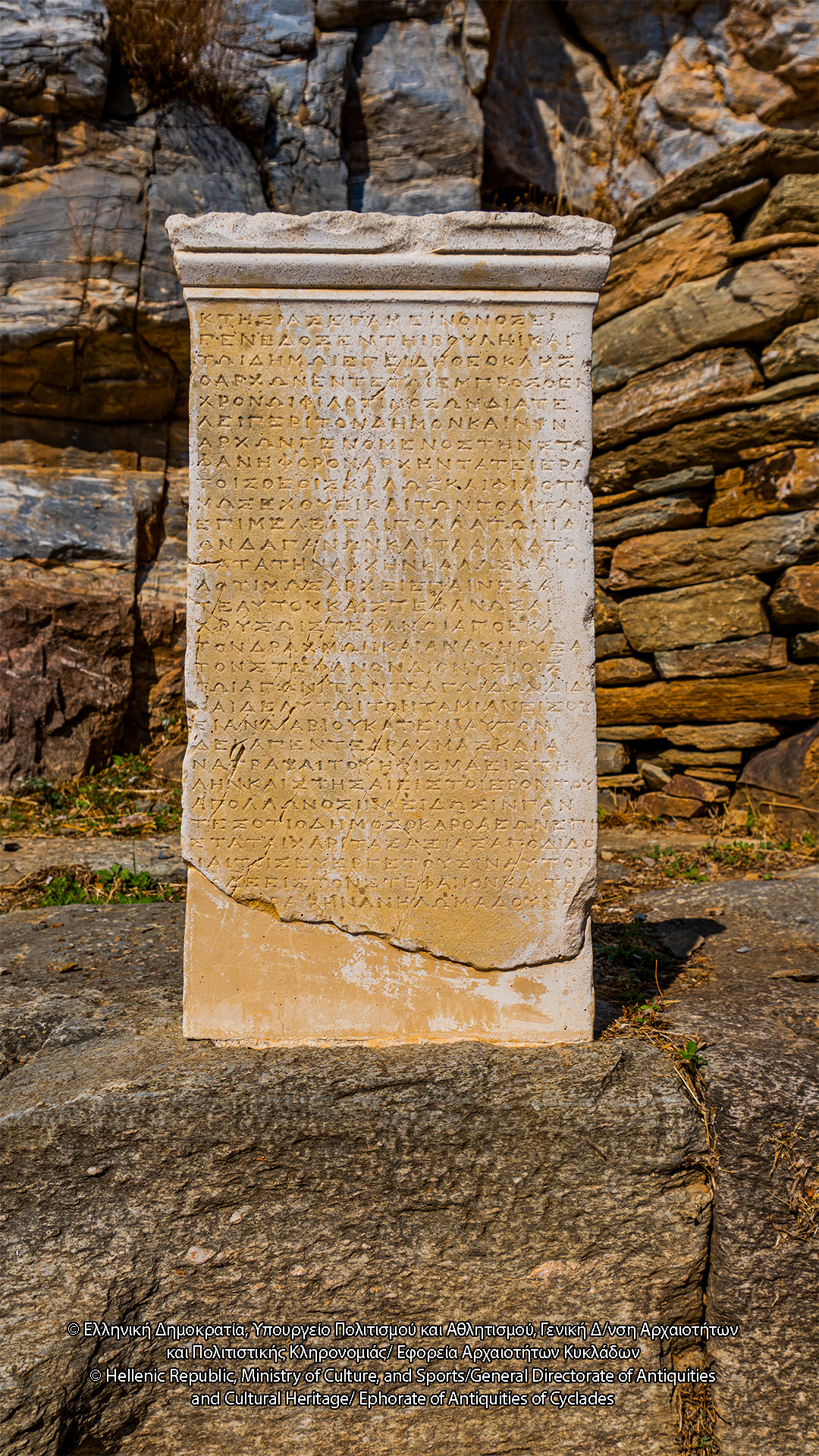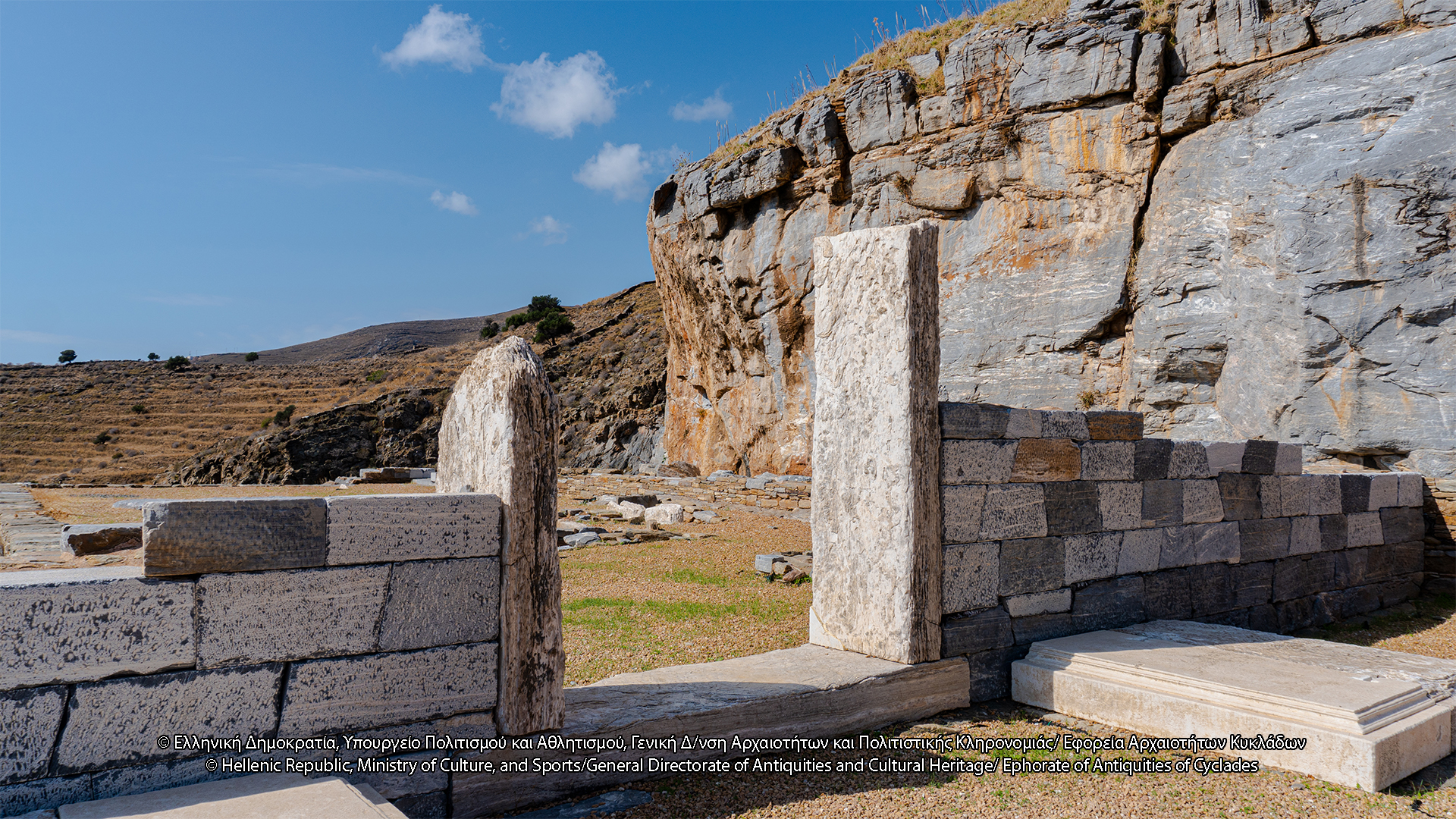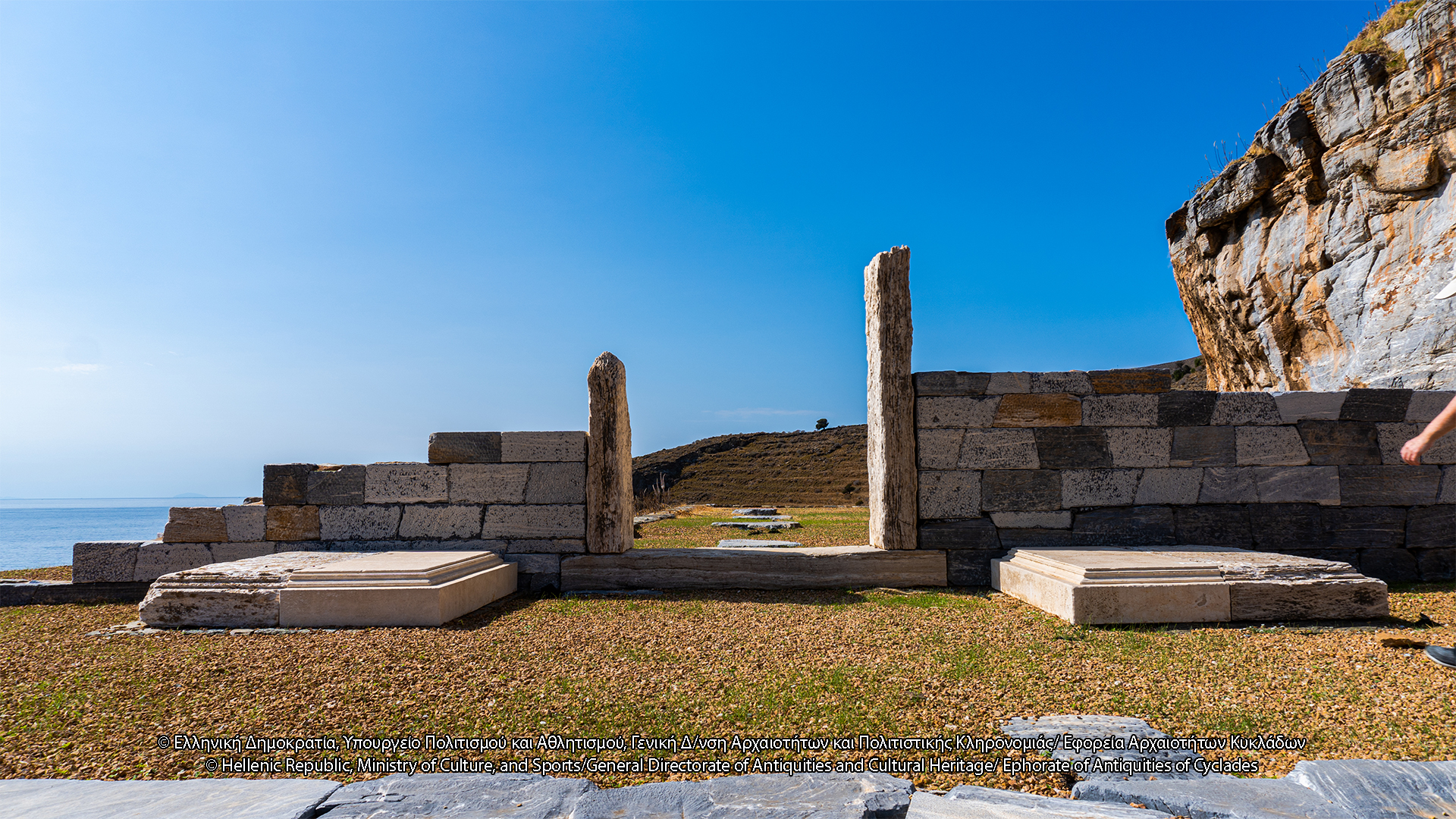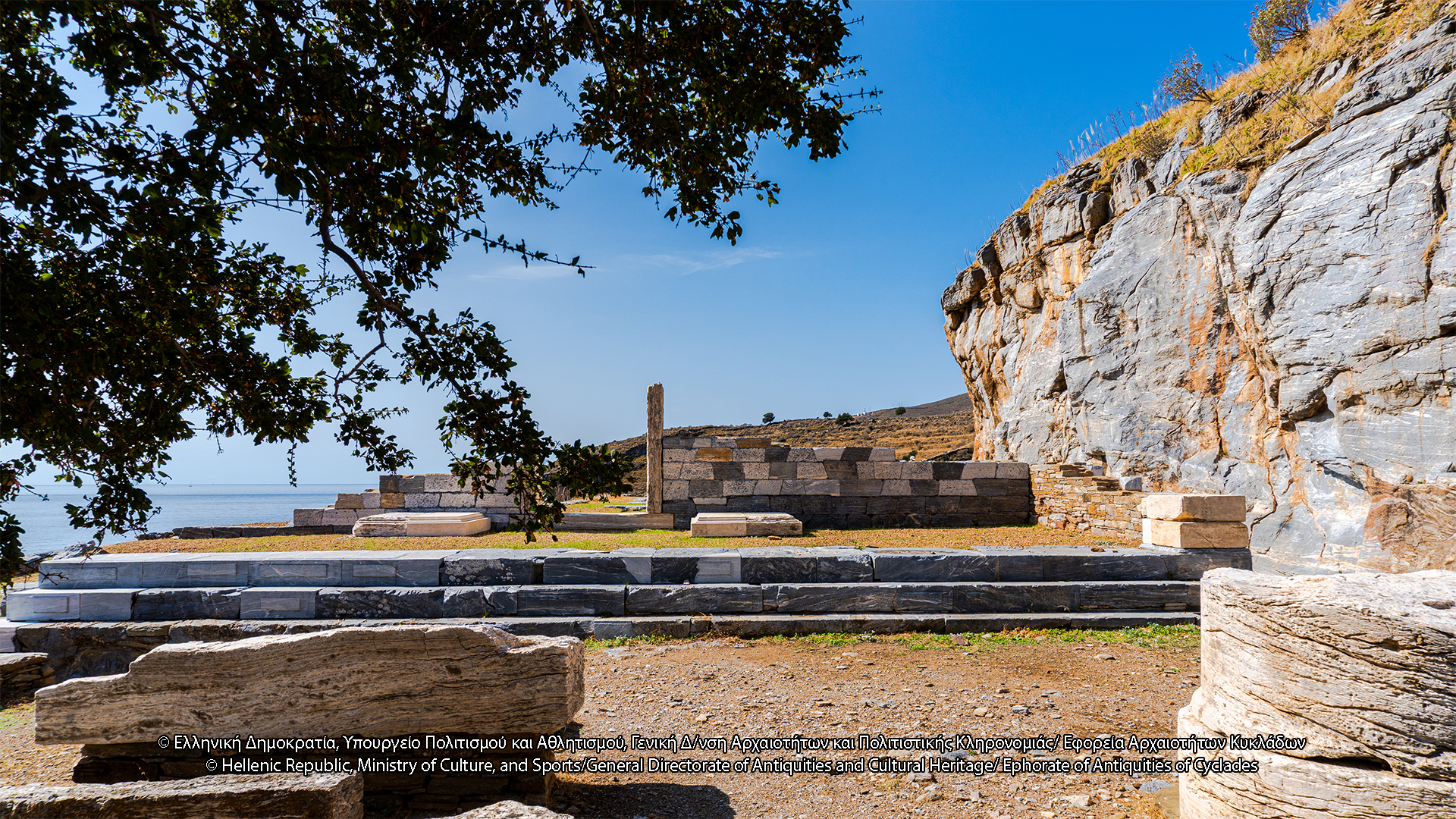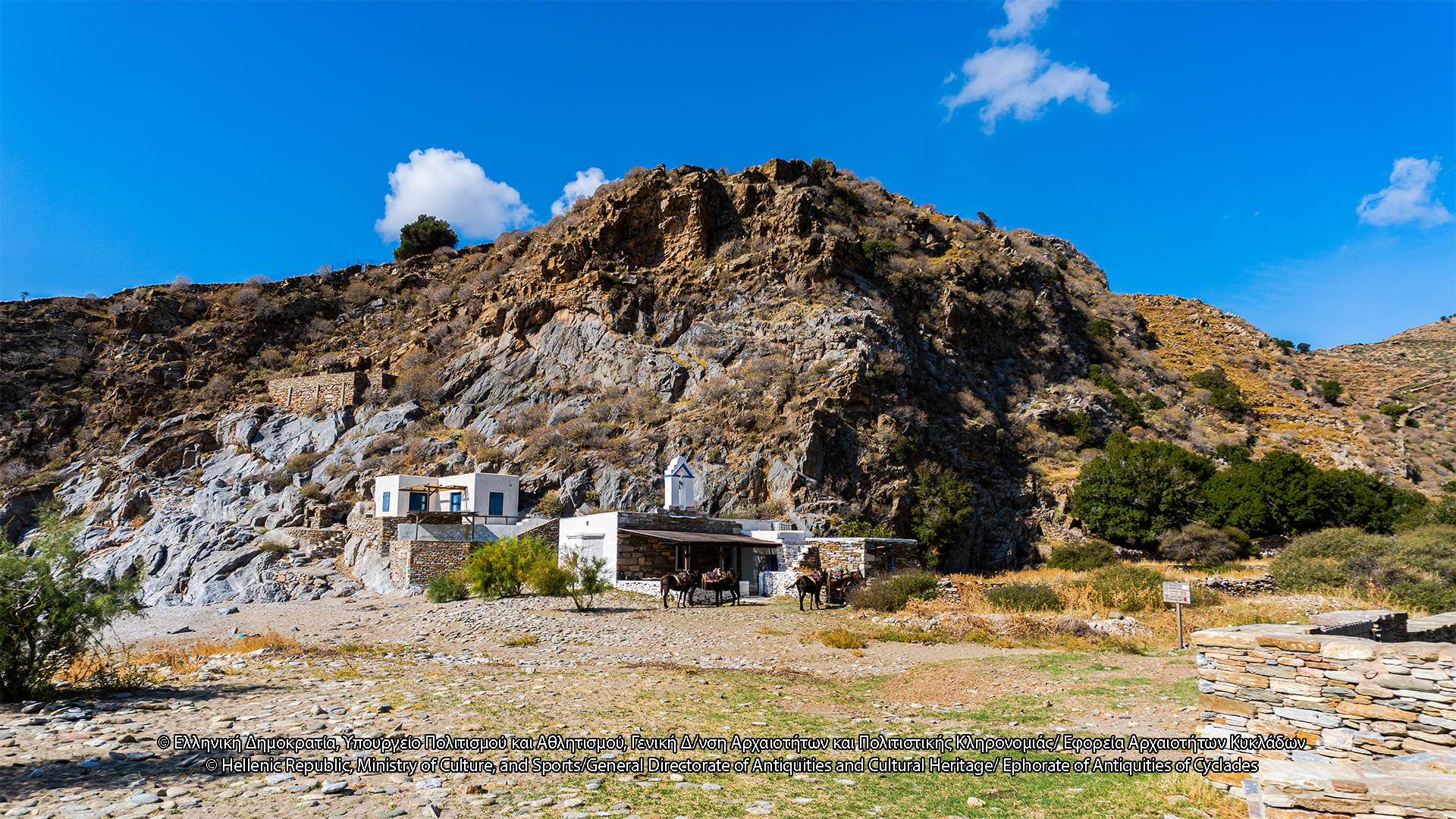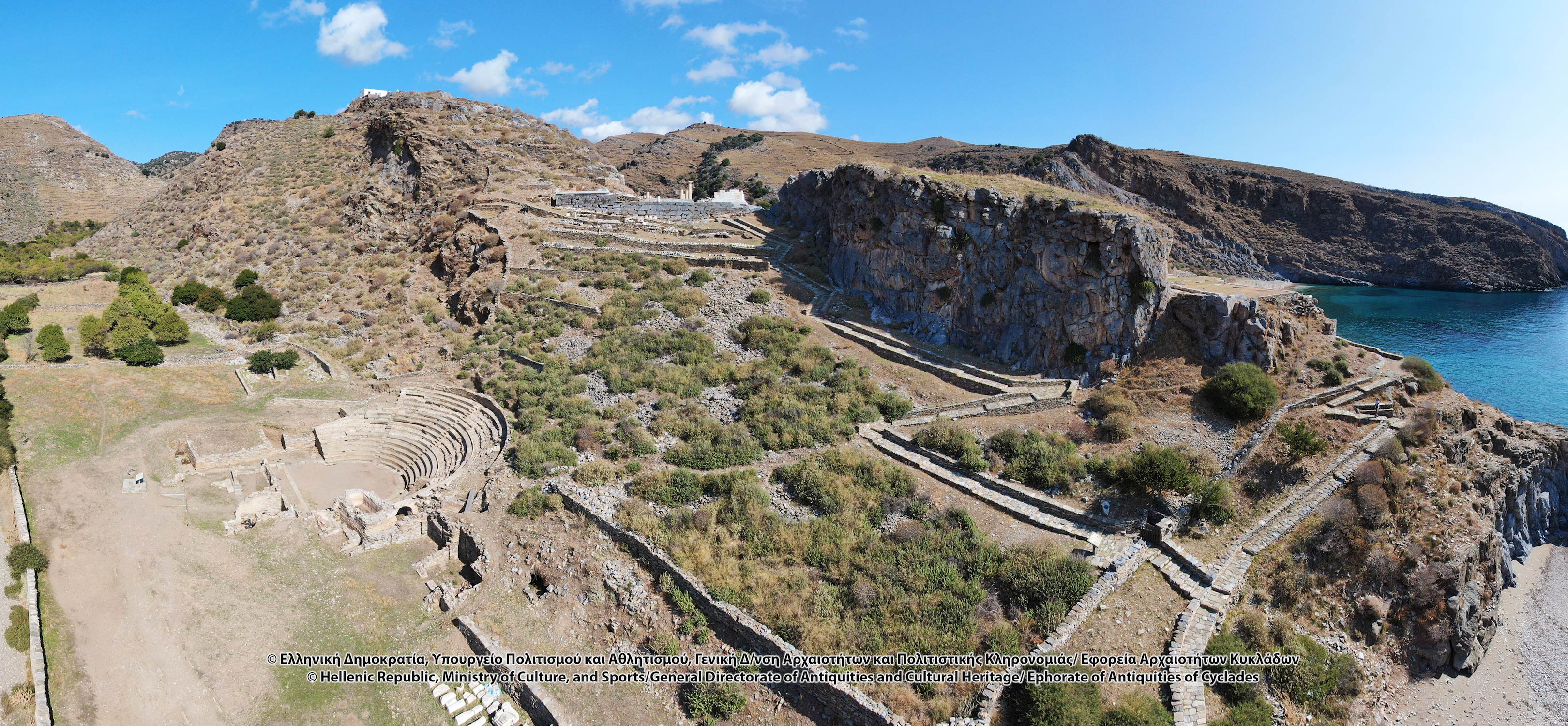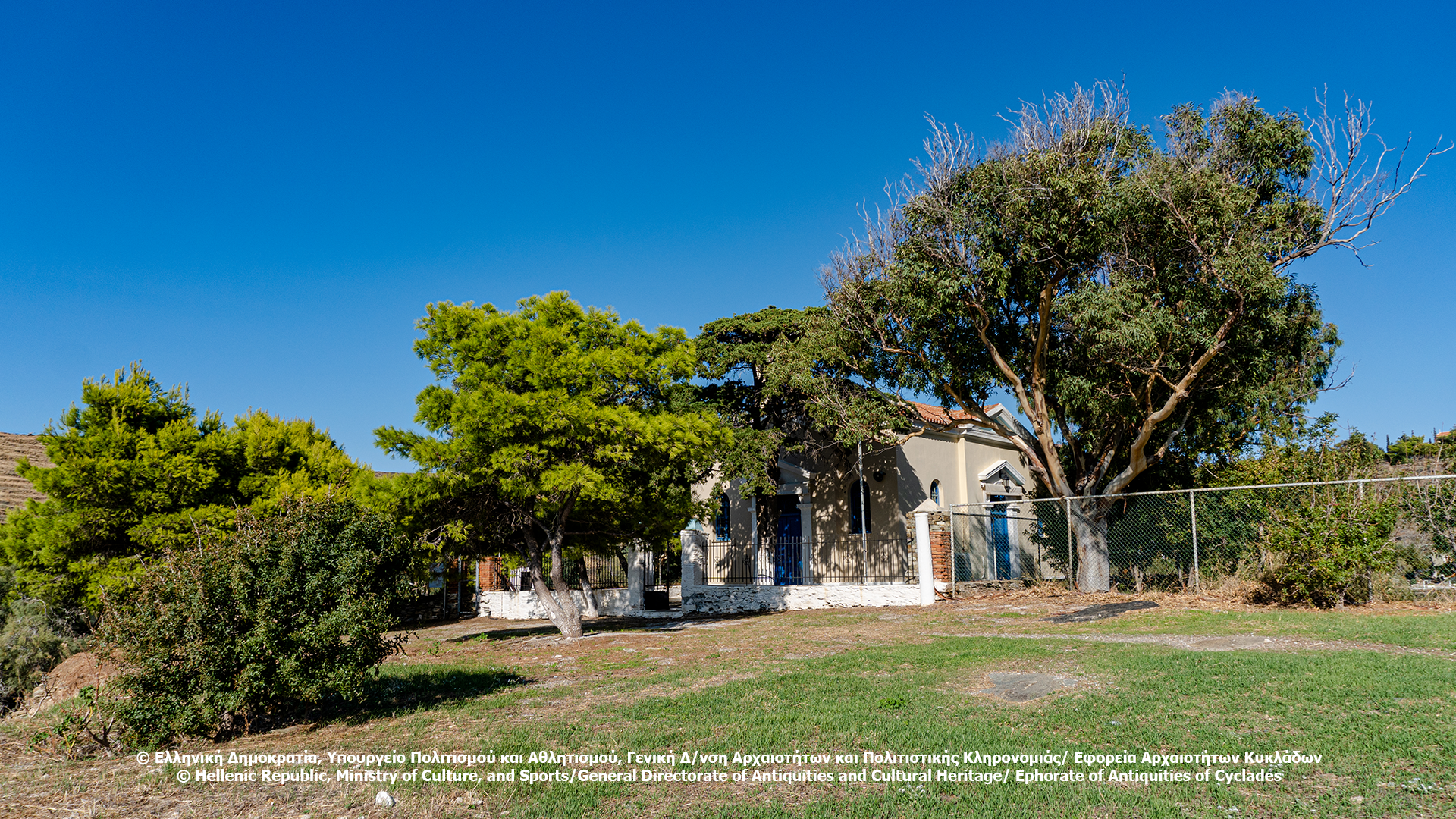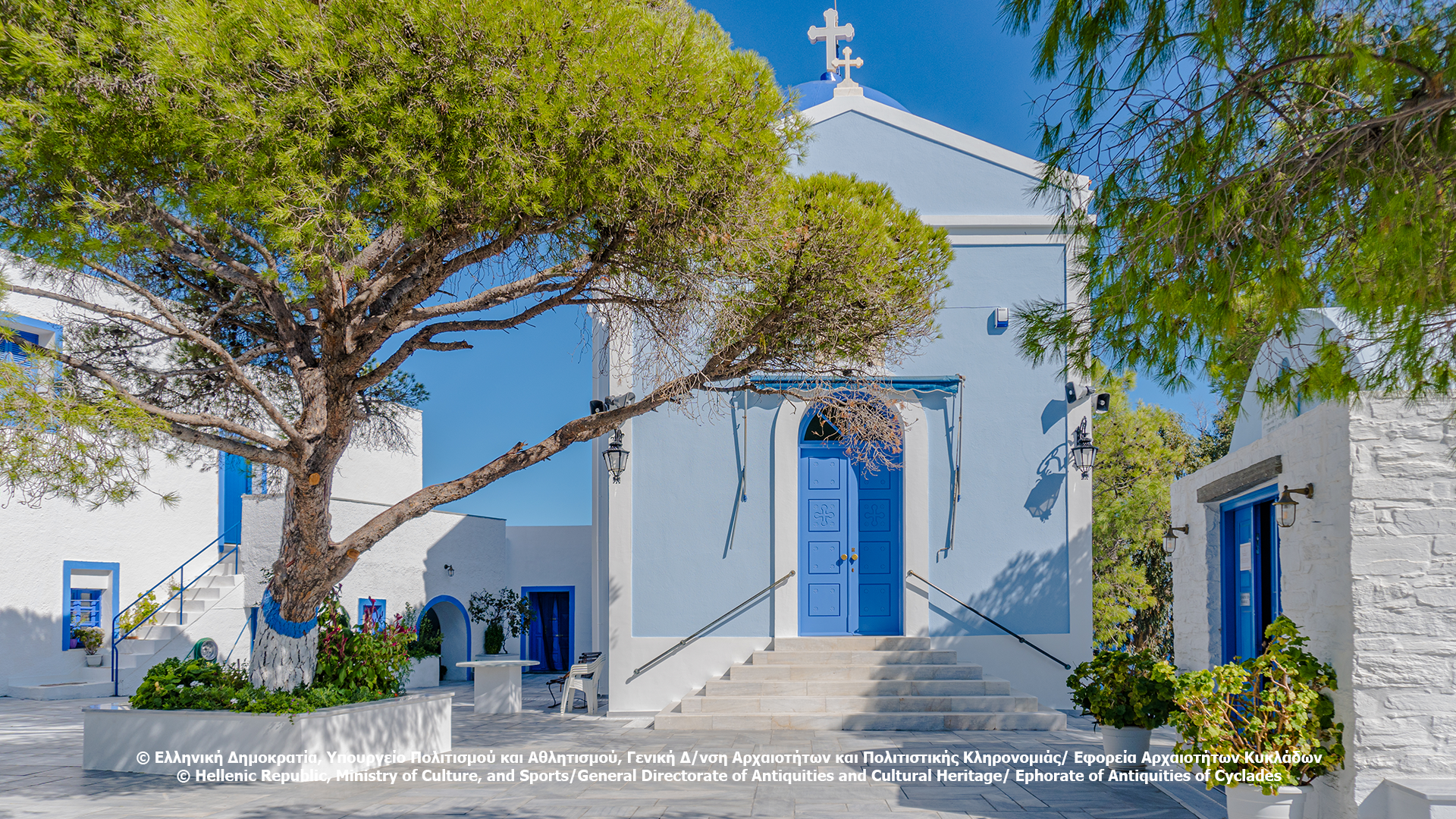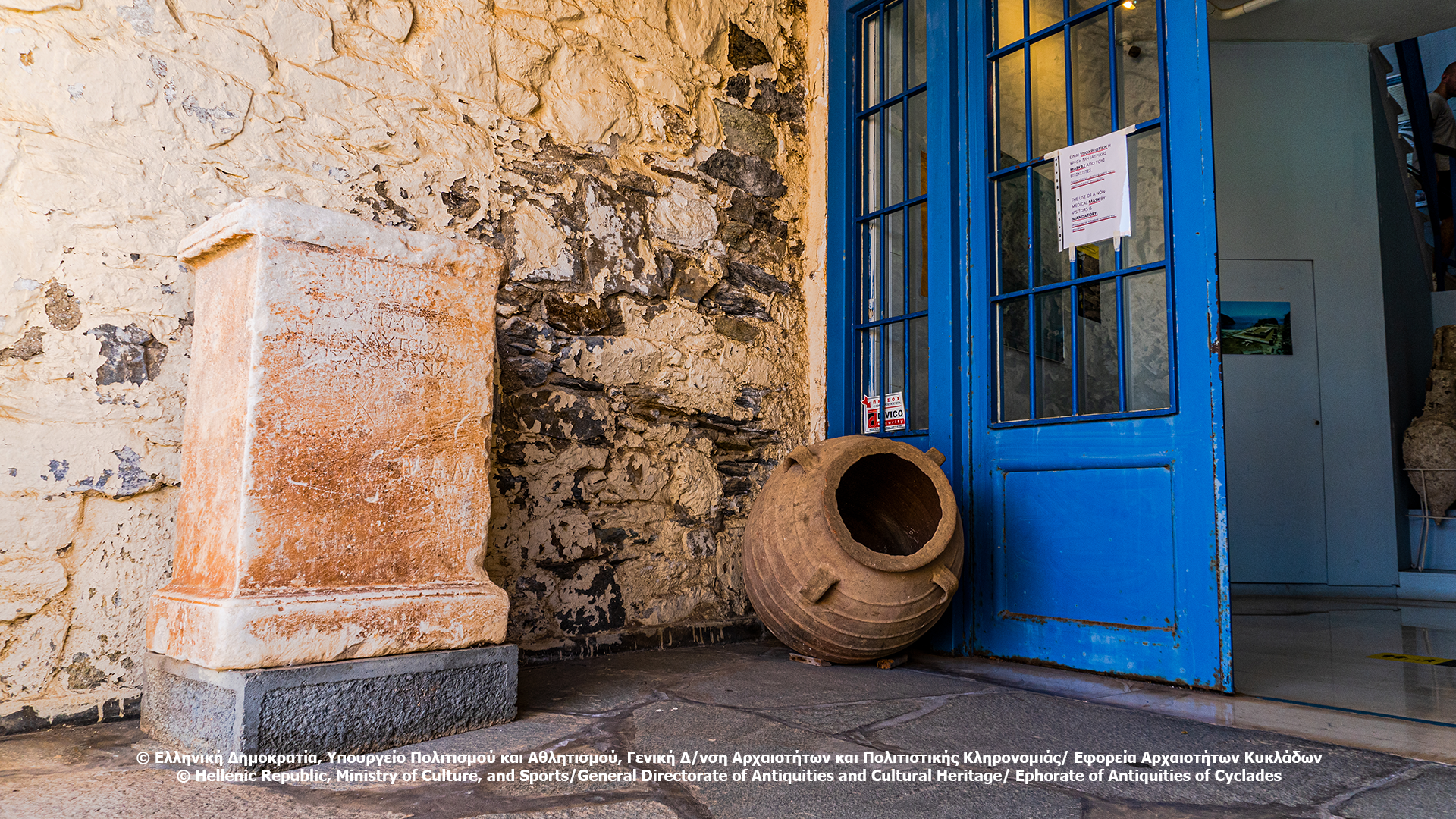Karthaia is the most important archeological site of the island. As it occurs by the finds, it should have been the most prominent from the four cities-states. The earliest finds in the area date back to the early Cycladic period but are sporadic and do not support such an early installation at the site. The first nucleus habitation of Karthaia reached the Geometric period. Gradually the city grew, reaching its height in the 6th and 5th century B.C. and it seems that it survived as a settlement until the Paleochristian years.
The site includes an acropolis fortified with walls of more than 2 klm. length with gates, towers and boulders. The main area in the city is the Doric Temple of Pythian Apollo (c. 530 B.C.). In the vestibule and the ” square ” in front of the temple, many bases and offerings pedestals are saved, like a series of voting pedestals of the parliament and the municipality of the Karthaians. Another Doric temple (c. 500 B.C.) found in the area is allegedly attributed to Athena because of a statue of the goddess, which probably comes from the pediment of the temple.
It is the oldest known Doric temple in Cyclades. Its pediments and promontories were decorated with sculptural compositions depicting the Amazons Battle, which ones you may see in the Archeological Museum in Ioulis. In the same area there is also the building of unknown function “building D” (c. 300 B.C.), which owes its conventional name to letter D that Danish archeologist Brondsted noted on his first sketch of the area in 1811. Finally, at the western side of the acropolis lies the stone theater of the ancient town, that dates back to the Hellenistic times. In 2015 its excavations were completed, revealing a small sized, simply constructed and totally built up theater with 880 seats capacity. It was constructed in the Hellenistic period while in the Post-Roman period there was added a baths complex.
In the dual bay of Karthaia distinguished today is the submerged ancient breakwater while at the top of the hills of Aspri Vigla, where today stands the church of Mirtidiotissa, there was an ancient temple. On the slopes of the hills spread out houses, as evidenced by sections of walls, staircases, stone piles and utilitarian objects.
South of the theater, to the east of the temple of Apollo and on the road connecting the two terraces survives a tank system for the water supply of the city (Hellenistic and Post-Roman times). Inside the temple of Apollo and around of the temple of ” Athena ” there are graves (6-7th century A.D.), often lined with ancient architectural elements in secondary use. The most important finds of the excavations in Karthaia are exhibited now in the Archeological Museum in Ioulis.
Means of access:
Η πρόσβαση στην Καρθαία εξασφαλίζεται είτε από τέσσερα λιθόστρωτα παραδοσιακά μονοπάτια, ενταγμένα σε δίκτυο οδοιπορικού τουρισμού με ειδική σήμανση (Αγ. Συμεών, Κάτω Μεριά, Σταυρουδάκι, Χαβουνά) είτε από σύντομο μονοπάτι από τον όρμο Καλησκιάς. Δυνατή είναι και η από θαλάσσης προσέγγιση.
Disabled access:
Δεν υπάρχει πρόβλεψη.
Opening hours:
Ο χώρος είναι διαρκώς επισκέψιμος και χωρίς εισιτήριο.

